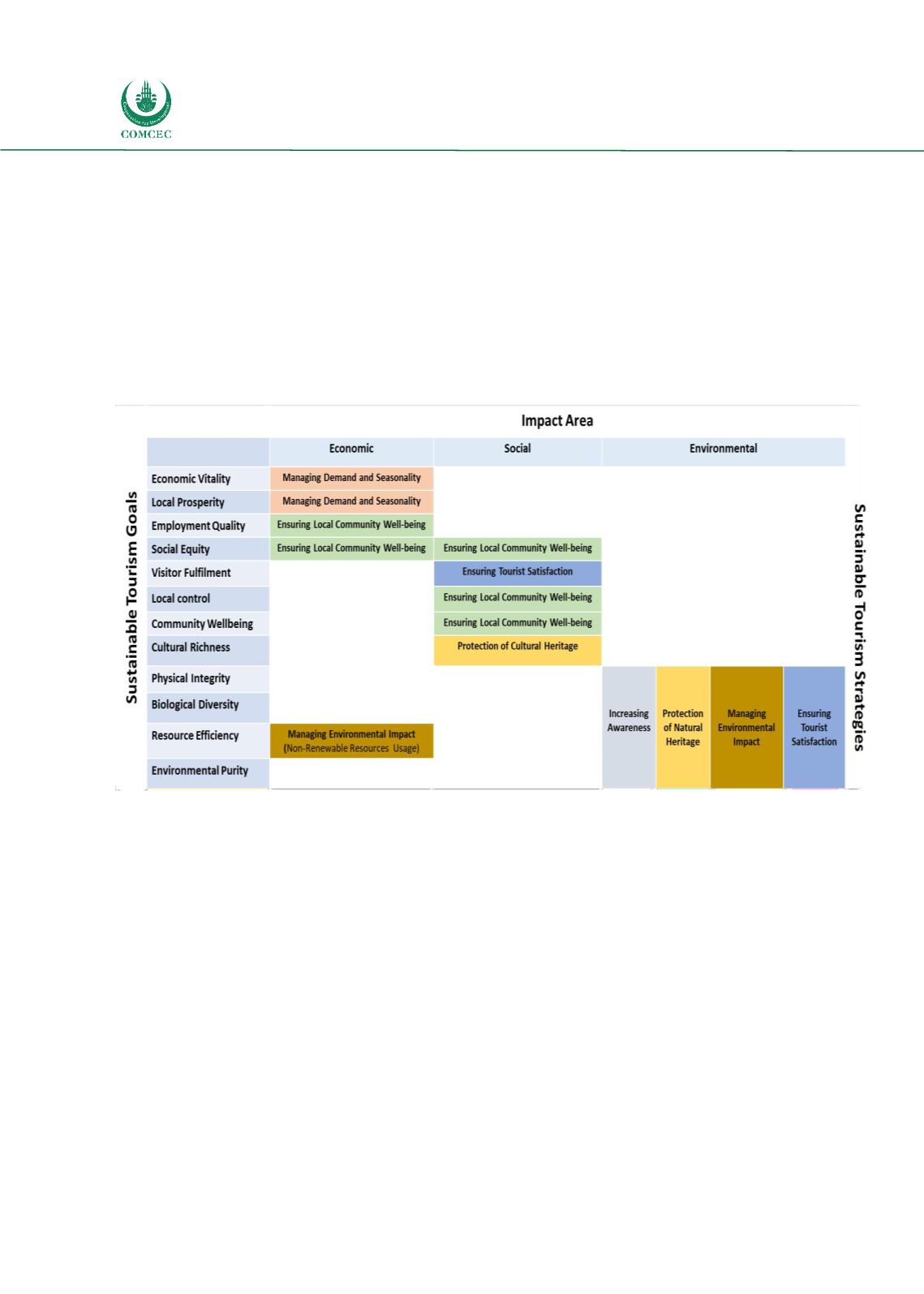

Sustainable Destination Management
Strategies in the OIC Member Countries
112
3.4. Parameter 3: Effective Sustainable Tourism Strategies
As illustrated in the following diagram, destinations use various sustainability strategies to address
the economic, social, and environmental impacts of tourism. These include strategies for
increasing awareness of sustainability issues at the destination level, the protection of natural and
cultural heritage assets, management of environmental impacts (e.g., useof non-renewable resources,
pollution reduction and waste management), planning of future tourism development and activities,
managing demand and seasonality effects, and ensuring community well-being and tourist
satisfaction.
Figure 19: Sustainable Tourism Strategies
Source: DinarStandard Analysis
As the following table shows, the leading non-OIC country examples have robust and
comprehensive initiatives with well-defined goals covering the various sustainable tourism
strategies. New Zealand presents the strongest example in terms of protecting natural and cultural
heritage through designating them as world heritage sites, with 28 Natural World Heritage Sites,
and 120 Cultural World Heritage Sites. Both Denmark and Italy have community wellbeing
elements incorporated into eco-certification, which are endorsed by destination management
organizations, of hospitality establishments at their destination. In all examples, tourism sector
players are encouraged through the use of incentives to adopt more sustainable practices.
















